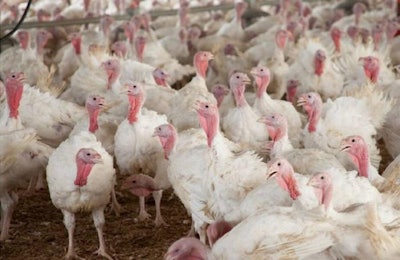
Weather conditions and relaxed biosecurity efforts were likely factors for the introduction of H7N8 avian influenza into Indiana turkey flocks in January, according to a preliminary epidemiology report issued by the USDA Animal and Plant Health Inspection Service (APHIS).
APHIS released the report on March 5.
Biosecurity measures
In-person interviews were conducted at all 10 turkey farms where the presence of avian influenza was detected.
There were certain practices identified as risk factors in the 2015 avian influenza outbreak, and analysis and interviews showed that some of those practices were eliminated from the routines in 2016.
The interview data revealed:
- None of the farms to test positive used different personnel in different barns; three required employees to scrub footwear, and only one required employees to stay off-farm at least 24 hours after exposure to other poultry.
- All ten farms shared company trucks and feed trucks during the 14 days prior to infection. On seven farms, a company service person entered the infected barn.
- Only three farms reported cleaning and disinfecting the barn’s hard surface entry way, which in the previous avian influenza study, was associated with decreased odds of being infected.
- Nine of the ten farms reported a gravel road that vehicles drive on to enter the operation. The presence of a gravel road was identified as a risk factor in a study conducted in 2015. Feed trucks and company personnel vehicles approached the barns, but renderer and garbage trucks did not.
Weather factors
APHIS reported that the weather in Dubois County, Indiana was warmer and wetter than past years, which may have contributed to the introduction and persistence of the virus.
The mean high temperature in the county during the period when avian influenza was detected was 50.88 F and the mean low was 34.04 F. These temperatures, which were higher than they were in 2014 and 2015, have been shown to be conducive to persistence of avian influenza in the environment. Precipitation in the 2016 period was higher than it was in 2015, which may have created an environment conducive to survival of the virus.
The full avian influenza epidemiology report is available online.

















